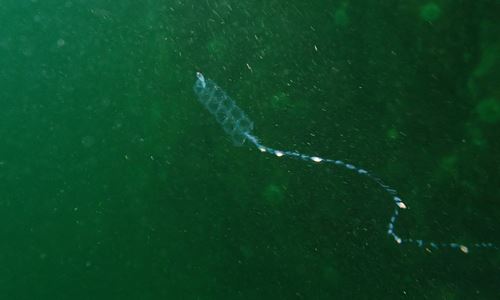It exhibits light brown pigmented spots, which are surrounded by polygonal pigmented cells in a wine-red coloration. Located just behind the pneumatophore, there is a series of muscular swimming bells known as nectophores that aid in locomotion. When observed from the sides, these nectophores have a square shape (in preserved specimens) and are flattened from the side connected to the stem to the side with the ostium. The largest structures in this organism are the digestive bodies, consisting of gastrozooids and palpons. Gastrozooids possess a flexible mouth that can expand to engulf prey. Adjacent to the stomachs are muscular tentacles, referred to as dactylozooids, which have branches known as tentilla extending out to capture prey and then contracting to bring the prey into contact with the gastrozooid. These tentacles are also used for defense against predators.
